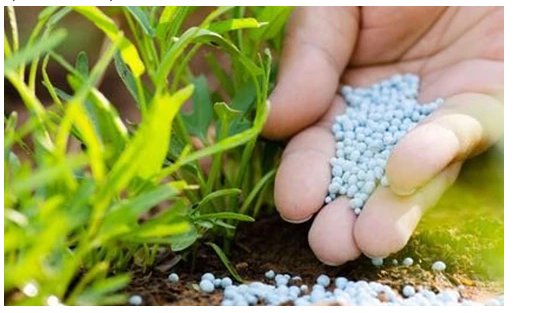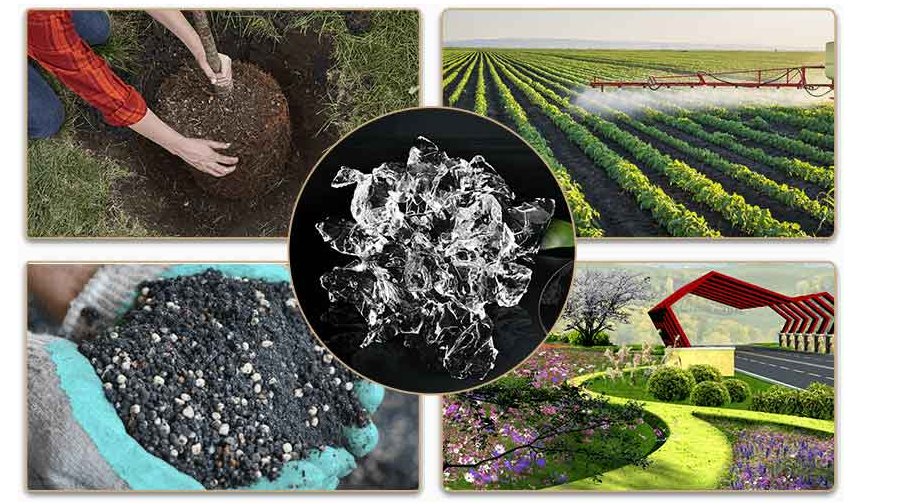Protecting the environment, plant, animal, and human health using natural strategies is a key objective for developed nations. The recent adoption of absorbent polymers and hydrogel in agriculture has shown numerous advantages such as improving soil quality, conserving water, reducing soil nutrient consumption, mitigating dehydration and moisture stress in crops, and managing phytopathogens. Seed-coating techniques have become common for enhancing seed protection and promoting plant growth, employing absorbent polymers, hydrogels, growth regulators, pesticides, fertilizers, and beneficial microorganisms. This review highlights the importance of various superabsorbent polymers and hydrogels in an integrated approach to protect seeds, plants, and soil and to control the slow release of fertilizers, thus maintaining the balance of ecosystems.
Agriculture as a fundamental pillar of its economy and an indispensable primary industry. However, the increasing use of chemical fertilizers and water resources to boost crop yields and meet rising food demands has led to significant nutrient losses due to rapid fertilizer dissolution. This inefficient utilization, with nitrogen fertilizer utilization at 30-35%, phosphate fertilizer at 10-25%, and potash fertilizer at 30-45%, results in economic losses, energy wastage, and environmental issues like groundwater pollution, water eutrophication, soil degradation, and air pollution. How to reduce fertilizer use while maintaining its efficiency is an important issue currently faced by the industry.

Water scarcity poses another challenge to agricultural development in the World, with per capita water resources only a quarter of the world average. The World also faces severe soil erosion and desertification, compounded by its large population. Effectively utilizing limited land and water resources to sustainably feed this population is a major concern for agricultural sustainability.
Super absorbent resin is a new type of functional polymer material developed in recent decades [1]. Due to its special chemical composition, physical structure and water absorption and water retention properties, it can resist drought, improve soil, and maintain fertilizer efficiency in farmland. It is a new type of soil conditioner and agricultural drought-resistant and water-saving material. Combining it with fertilizers to prepare agricultural and forestry with water absorption and water retention functions will surely cause a new upsurge in the field of fertilizer research [2]. However, slow-release fertilizers are expensive and their application is not universal. In addition, most of the super absorbent resin materials used in the production of slow-release fertilizers are synthetic polymer materials of polyolefins, which are not degradable. Large amounts of application will make the soil sandy and the land is difficult to sustainably use. The materials pollute the soil environment, and it is necessary to develop degradable coating materials [3].
Super absorbent polymer (SAP) typically refer to a novel class of functional polymer materials containing hydrophilic groups such as -COOH, -NH2, and -OH. Upon contact with water, the crosslinked network structure of super absorbent polymers, rich in strong hydrophilic groups like carboxyl (-COOH) and hydroxyl (-OH), undergoes ionization and interacts with water molecules through hydrogen bonding. This interaction enables super absorbent polymers to absorb substantial amounts of water. Additionally, the presence of electrolytes within the molecular network ofsuper absorbent polymers creates a potential difference between the internal electrolyte solution and external water, driving water infiltration into the polymer structure.

The differential penetration potential leads to continuous water ingress into the polymer molecules, inducing electrolysis upon contact with the network's ions. While positive ions become free, negative ion groups remain tethered to the network chain, causing repulsion between adjacent negative ions and expanding the polymer network structure. Consequently, a significant volume of water permeates the mesh of the molecular network structure. Traditional irrigation methods suffer from high water consumption due to evaporation and leakage, resulting in low water use efficiency. super absorbent polymers can absorb deionized water hundreds to thousands of times their mass or physiological saline tens to nearly a hundred times their mass, retaining most of the absorbed water for extended periods. Incorporating super absorbent polymers into soil enhances soil's effective absorption of irrigation water and rainfall, thereby improving soil water retention capacity.
After application to soil, the absorbed water gradually releases for plant uptake as external moisture levels decrease. Research findings indicate that super absorbent polymers maintain their water absorption capacity primarily within the 10-50 KPa low suction range, with 98% of absorbed water being free water readily accessible to plants. Moreover, super absorbent polymers' maximum water absorption capacity (13-14 Kgf/cm2) remains lower than that of plant roots (17-18 Kgf/cm2), preventing water backflow from the root system. Thus, extending irrigation cycles during drought periods enhances plant drought resistance.
Upon contact with soil solution, super absorbent polymers absorb water and swell into a gel-like state. The soluble fertilizer within the hydrogel experiences hindered diffusion due to the swollen gel, resulting in a slowed release rate of fertilizer nutrients. This obstruction effect improves fertilizer utilization efficiency. Under specific conditions, the adsorbed nutrients slowly diffuse from the hydrogel through the network system into the soil, facilitating crop absorption and utilization, and ultimately promoting plant growth.
Qingdao SOCO polymer water-absorbent materials not only function as soil conditioners that absorb and retain water, but also facilitate the gradual release of fertilizer nutrients. It combines the excellent performance of super absorbent resin and slow-release fertilizer, and is expected to trigger a new revolution in the fertilizer industry. The development trends and research directions of this fertilizer are summarized as follows:
1. Before producing the fertilizer, mixing super absorbent polymer with other fertilizer raw materials (such as nitrogen, phosphorus, potassium and other nutrients). This method evenly distributes the absorbent material within the fertilizer granules, ensuring that it works throughout the fertilizer granules. After the fertilizer produced, physically mix with the particles with certain proportion.
2. Optimize the nutrient release mechanism by changing the composition of the superabsorbent resin and its interaction with the fertilizer. This optimization aims to tailor the release pattern to crop needs while enhancing the degradability and salt tolerance of the absorbent resin.
In the actual use of the water-retaining agent, the types and application conditions of the water-retaining agent should be combined to systematically study the effect of various factors such as soil texture, fertilizer types, climatic conditions, application amount, application time, and application method of water retention agent in the effect of water retention agent. At the same time, the water retention agent should be comprehensively evaluated in terms of water absorption and water retention, fertilizer retention and efficiency, soil improvement, antibacterial and disease resistance and environmental impact.
No.51-2, Wuyang Road, Qingdao, China